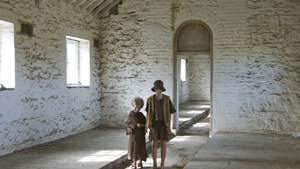A real story, in a real workhouse.
The story of the Irish workhouse is a sad yet little-known part of Ireland’s past. 163 workhouses were built in Ireland throughout history, the last resort of the destitute poor from the 1840s-1920s. The workhouse was a system of social welfare based on indoor relief.
Entire families had to enter the workhouse together. To qualify for admission, people had to give up any land they had. On entering the workhouse, family members were split up into separate quarters, sometimes never to see each other again. Children aged 2 or younger could stay with their mothers, but young and old alike were expected to work. In return, the 'inmates' received enough food to survive. Life in the workhouse was harsh and disciplined.
As an institution, the workhouse was despised. In particular, the conditions during the famine years remained in the memories of those who experienced it for generations.
At the Irish Workhouse Centre, Portumna, you can get a real insight into what life in a workhouse was really like. All seven workhouse buildings are intact. Visitors enter via the waiting room – the actual room people came through when seeking admission to the workhouse. A short film is then shown in what was the girls’ classroom. After this, visitors are guided through the girls’ yard and the women’s dormitory block, including the matron’s quarters, the nursery, the women’s workroom and the laundry. The centre is a work-in-progress, so visitors also have the opportunity to learn about ongoing conservation and restoration work.
Discover more of Portumna’s heritage and natural beauty, visit Portumna Castle and Gardens, the Dominican Friary and the 450 hectares of Forest Park.
